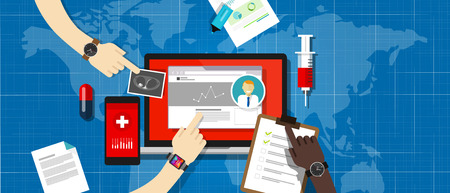
(Copyright: bakhtiarzein / 123RF Stock Photo)
Jenna Wiens, a computer scientist and assistant professor of engineering at U-M, helped create an algorithm to predict a patient’s risk of developing a C-diff infection (CDI), one of the deadliest killers in American hospitals. The algorithm uses a form of artificial intelligence called machine learning to extract warning signs of disease from patients’ vital signs and other health records—constellations of symptoms, circumstances, and details of medical history most likely to result in infection at any point in the hospital stay.
The CDI algorithm, and other innovations like it, are at the leading edge of a technological wave starting to hit the U.S. health care industry. Machine learning’s predictive powers are well-established, and it is poised to move from labs to broad real-world applications. “Think about all the data we are collecting right now,” Wiens said. “Electronic health records. Hospitalizations. At outpatient centers. At home. We are starting to collect lots of data on personal monitors. These data are valuable in ways we can’t yet know.”
